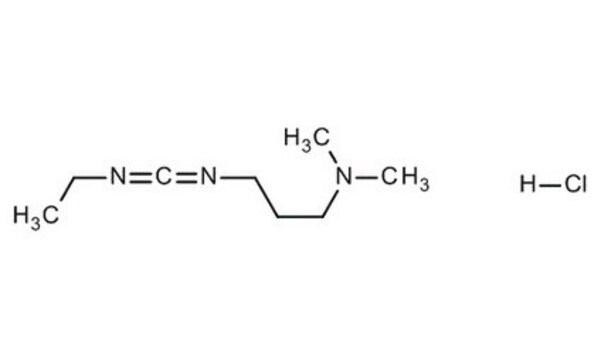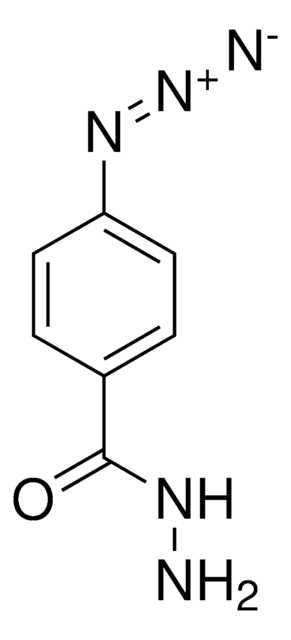39391
N-(3-Dimethylaminopropyl)-N′-ethylcarbodiimide
≥97.0% (T), for peptide synthesis
Sinónimos:
N-Ethyl-N′-(3-dimethylaminopropyl)carbodiimide, EDC, WSC
About This Item
Productos recomendados
Nombre del producto
N-(3-Dimethylaminopropyl)-N′-ethylcarbodiimide, ≥97.0% (T)
Quality Level
assay
≥97.0% (T)
form
liquid
reaction suitability
reaction type: Coupling Reactions
refractive index
n20/D 1.461
density
0.877 g/mL at 20 °C (lit.)
application(s)
peptide synthesis
functional group
amine
storage temp.
−20°C
SMILES string
CCN=C=NCCCN(C)C
InChI
1S/C8H17N3/c1-4-9-8-10-6-5-7-11(2)3/h4-7H2,1-3H3
InChI key
LMDZBCPBFSXMTL-UHFFFAOYSA-N
Categorías relacionadas
General description
Application
signalword
Danger
Hazard Classifications
Acute Tox. 3 Dermal - Acute Tox. 4 Oral - Aquatic Acute 1 - Aquatic Chronic 1 - Eye Dam. 1 - Skin Corr. 1A - Skin Sens. 1A - STOT RE 2 Oral
target_organs
Stomach,large intestine,lymph node
Storage Class
6.1A - Combustible acute toxic Cat. 1 and 2 / very toxic hazardous materials
wgk_germany
WGK 3
flash_point_f
Not applicable
flash_point_c
Not applicable
ppe
Faceshields, Gloves, Goggles, type ABEK (EN14387) respirator filter
Elija entre una de las versiones más recientes:
¿Ya tiene este producto?
Encuentre la documentación para los productos que ha comprado recientemente en la Biblioteca de documentos.
Los clientes también vieron
Artículos
Carbodiimide-mediated peptide coupling remains to the most frequently used technique.
Collagen molecules play a critical role in tissue architecture and strength, and in cell-matrix interactions as insoluble ligands to regulate the diverse phenotypic activities of cells.
Nuestro equipo de científicos tiene experiencia en todas las áreas de investigación: Ciencias de la vida, Ciencia de los materiales, Síntesis química, Cromatografía, Analítica y muchas otras.
Póngase en contacto con el Servicio técnico










